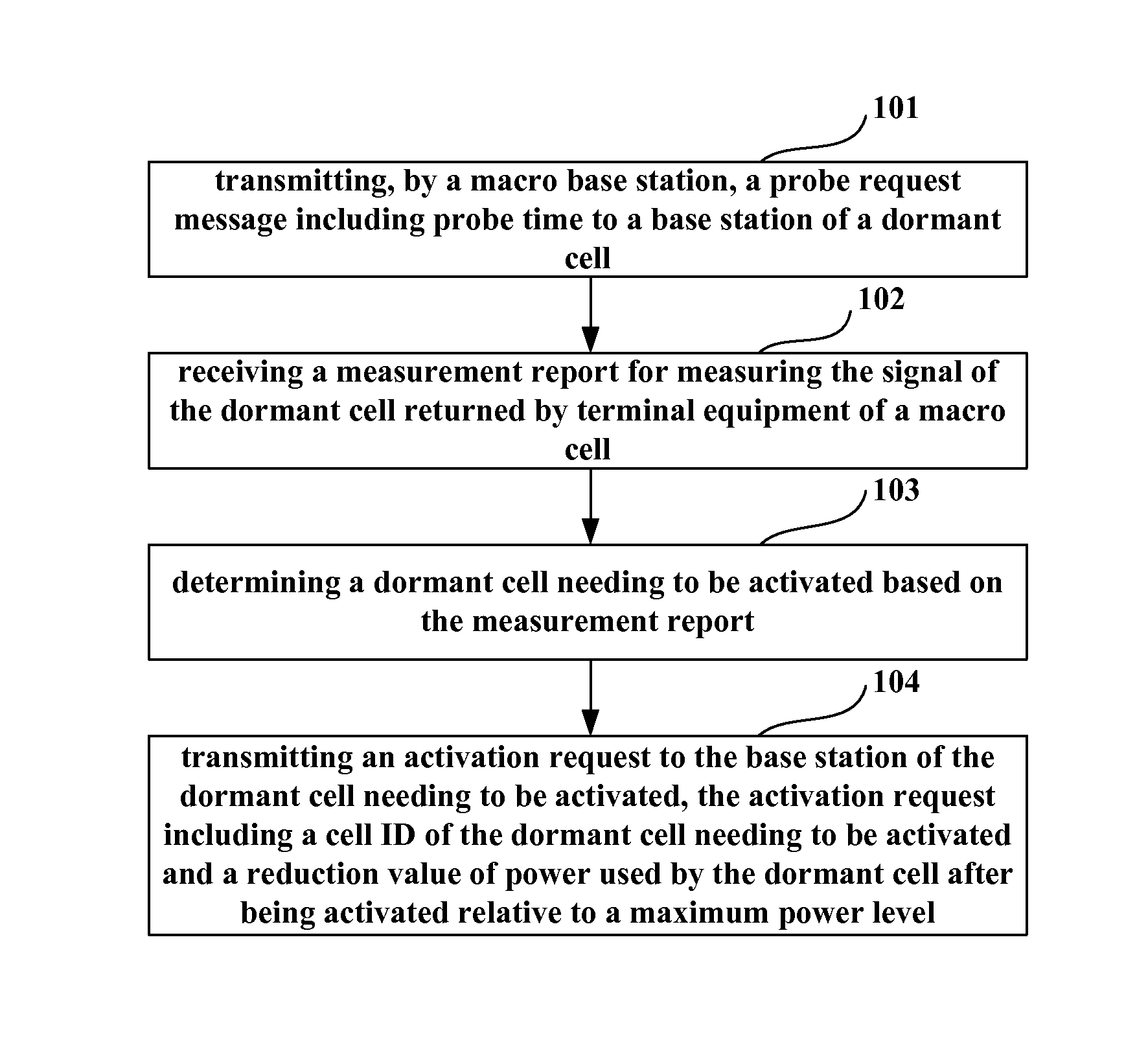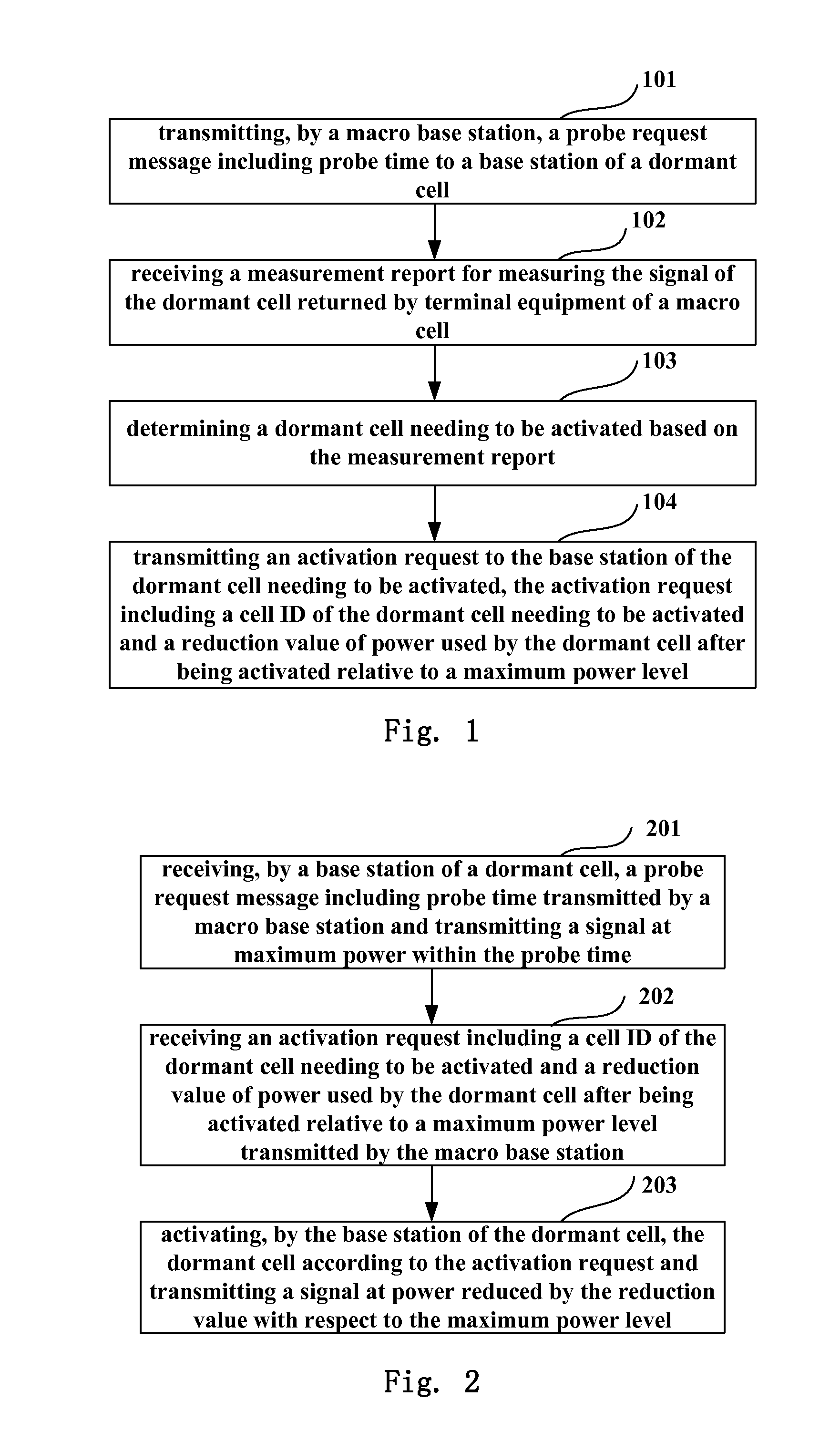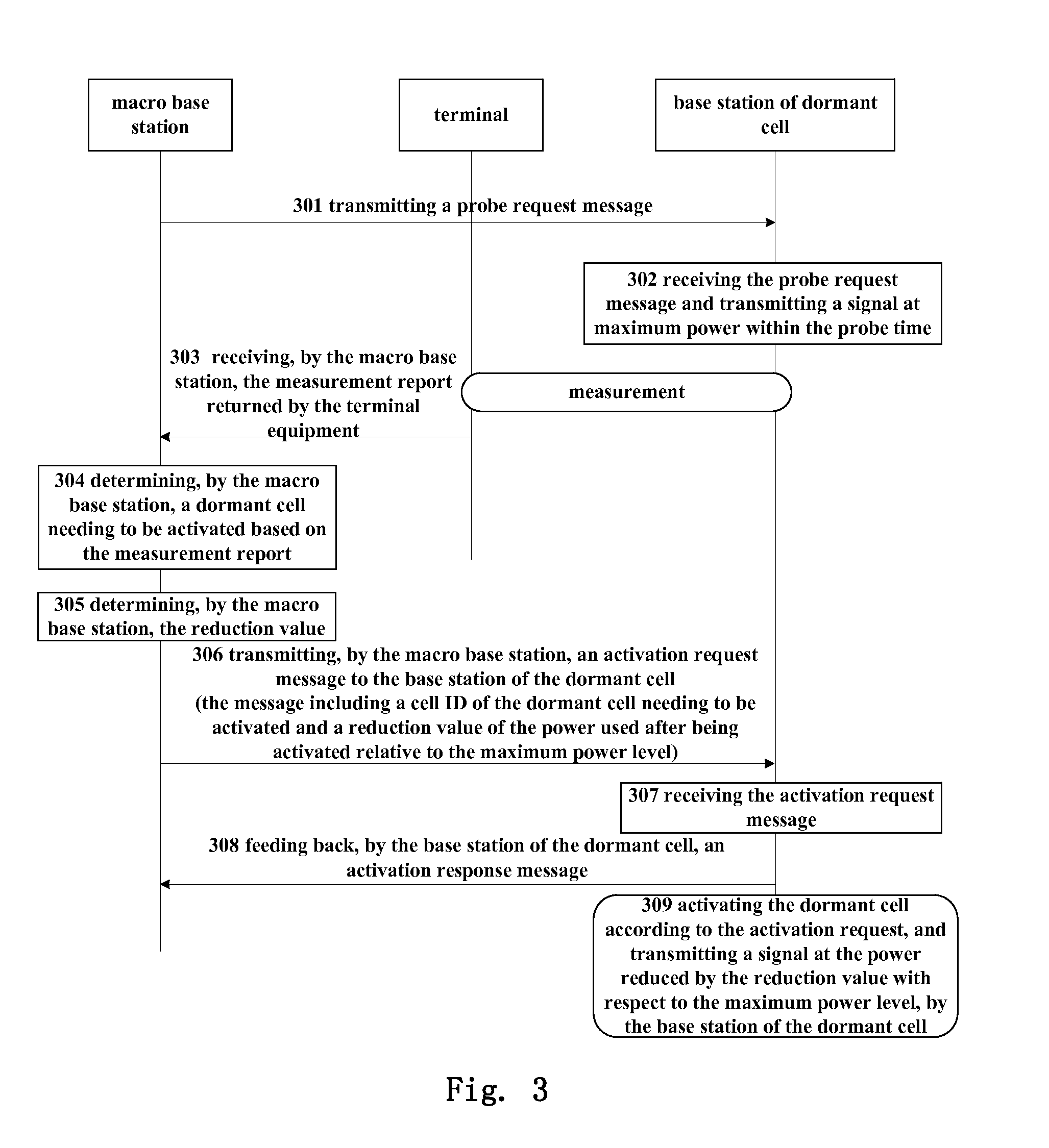Power control method, base station and terminal equipment
a power control and terminal technology, applied in the field of communication, can solve the problems of increasing signaling overhead and deteriorating the service quality of the terminal in the macro cell, and achieve the effect of reducing signaling overhead and avoiding the degradation of the service quality of the terminal
- Summary
- Abstract
- Description
- Claims
- Application Information
AI Technical Summary
Benefits of technology
Problems solved by technology
Method used
Image
Examples
embodiment 1
[0073]FIG. 1 is a schematic diagram of the power control method of Embodiment 1 of the present invention. As shown in FIG. 1, the method includes:
[0074]step 101: transmitting, by a macro base station, a probe request message including probe time to a base station of a dormant cell, so that the dormant cell transmits a signal at maximum power within the probe time;
[0075]step 102: receiving a measurement report for measuring the signal of the dormant cell returned by terminal equipment of a macro cell;
[0076]step 103: determining a dormant cell needing to be activated based on the measurement report; and
[0077]step 104: transmitting an activation request to the base station of the dormant cell needing to be activated, the activation request including a cell ID of the dormant cell needing to be activated and a reduction value ΔP1 of power used by the dormant cell after being activated relative to a maximum power level, so that the base station of the dormant cell transmits a signal at po...
embodiment 2
[0078]FIG. 2 is a flowchart of the power control method of Embodiment 2 of the present invention. As shown in FIG. 2, the method includes:
[0079]step 201: receiving, by a base station of a dormant cell, a probe request message including probe time transmitted by a macro base station and transmitting a signal at maximum power within the probe time;
[0080]step 202: receiving an activation request including a cell ID of the dormant cell needing to be activated and a reduction value ΔP1 of power used by the dormant cell after being activated relative to a maximum power level transmitted by the macro base station; and
[0081]step 203: activating, by the base station of the dormant cell, the dormant cell according to the activation request and transmitting a signal at power reduced by the reduction value ΔP1 with respect to the maximum power level.
[0082]It can be seen from the above embodiment that with the method, the base station of the dormant cell needs not to transmit a signal at maximum...
embodiment 3
[0083]FIG. 3 is a flowchart of the power control method of Embodiment 3 of the present invention. As shown in FIG. 3, the method includes:
[0084]step 301: transmitting, by a macro base station, a probe request message including probe time to a base station of a dormant cell;
[0085]step 302: receiving, by the base station of the dormant cell, the probe request message including probe time transmitted by the macro base station, and transmitting a signal at maximum power within the probe time;
[0086]in this way, terminal equipment of the macro cell may measure a signal of the dormant cell within the probe time, and report a measurement result to the macro base station; wherein, the measurement result may include signal intensity (such as reference signal receiving power, RSRP), or signal quality (such as reference signal receiving quality, RSRQ), etc.;
[0087]step 303: receiving, by the macro base station, the measurement report for measuring the signal of the dormant cell returned by the t...
PUM
 Login to View More
Login to View More Abstract
Description
Claims
Application Information
 Login to View More
Login to View More - R&D
- Intellectual Property
- Life Sciences
- Materials
- Tech Scout
- Unparalleled Data Quality
- Higher Quality Content
- 60% Fewer Hallucinations
Browse by: Latest US Patents, China's latest patents, Technical Efficacy Thesaurus, Application Domain, Technology Topic, Popular Technical Reports.
© 2025 PatSnap. All rights reserved.Legal|Privacy policy|Modern Slavery Act Transparency Statement|Sitemap|About US| Contact US: help@patsnap.com



